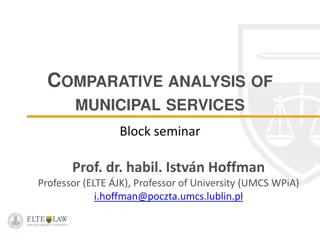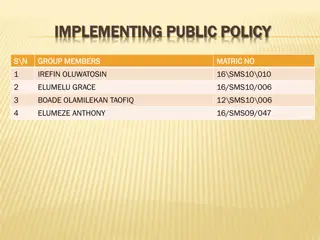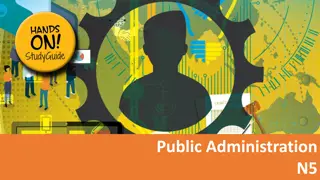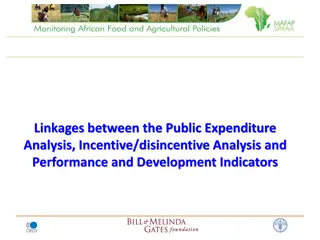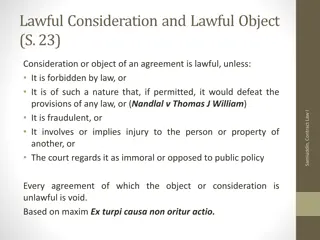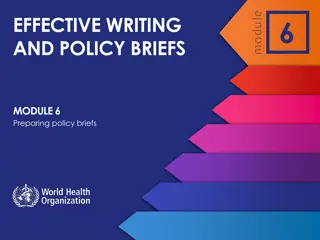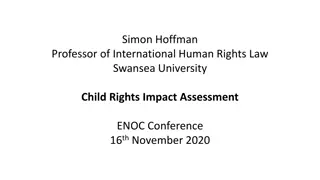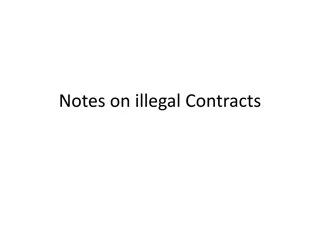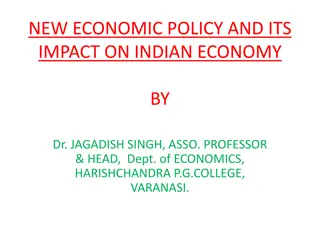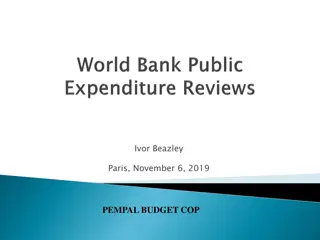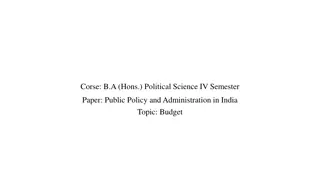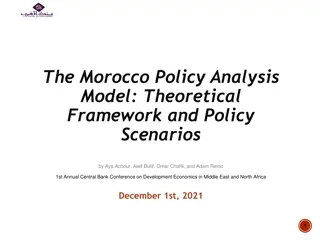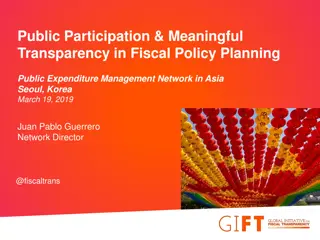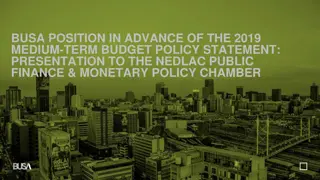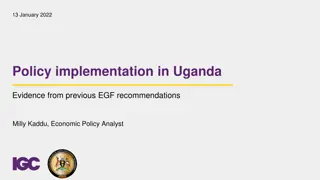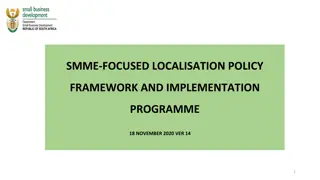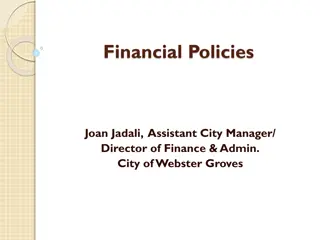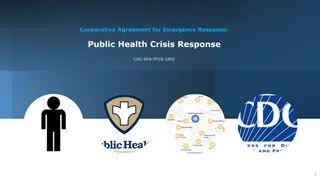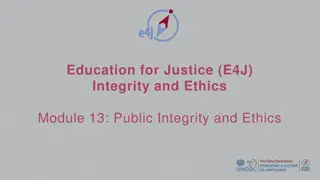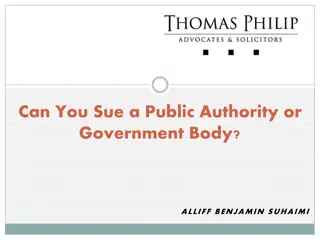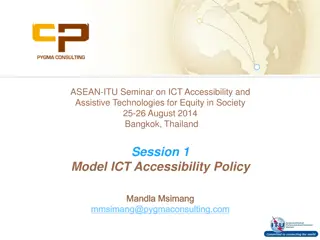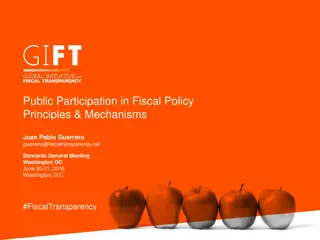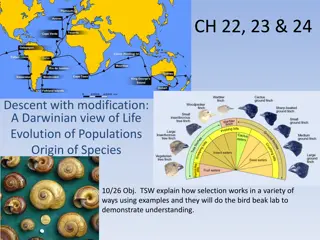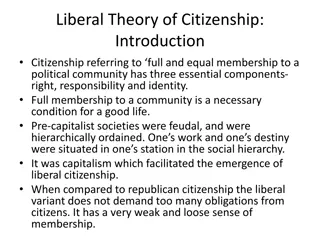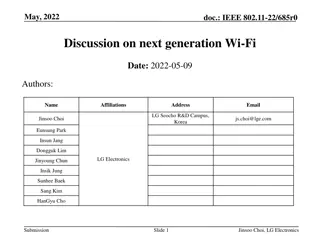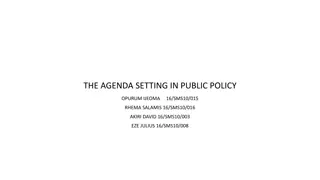Evolution of Public Policy: Analysis and Impact
The evolution of public policy from monarchial rule to modern governance is explored, emphasizing its historical significance and impact on society. Public policy analysis is aimed at understanding, shaping, and implementing policies to address societal issues. Types, purposes, and characteristics of public policy are discussed in detail, highlighting its role in shaping government actions and societal outcomes.
Download Presentation

Please find below an Image/Link to download the presentation.
The content on the website is provided AS IS for your information and personal use only. It may not be sold, licensed, or shared on other websites without obtaining consent from the author. Download presentation by click this link. If you encounter any issues during the download, it is possible that the publisher has removed the file from their server.
E N D
Presentation Transcript
INTRODUCTION Centuries ago, Public Policy was a rule of law handed down by Monarchs and Aristocrats. Through years of discussion, debate and even war, the evolution toward a negotiated approach to public policy has become apparent. This stresses the history of public policy as emphasized in various nations and time periods, from ancient Greeks to our present day world. Focusing on time, economic, and social factors, people begin to understand how governments in their own times reached critical policy decisions and the difficulties they encountered when implementing those local and world changing policies. Public Policy can change the future of almost anything, even great wars. The participation of the United States in the World War I and II reflected a dramatic shift in the United States public policy, showing an expansion of her policy influence. The evolution of public policy is marked by expansion of the power of the people as well as government. Throughout history, public policy leaders have contributed to the approaches now seen in modern government. There are so many major historic public policy documents that helped shaped the modern approach to how policy is created. The Magna Carter and the United States Constitution, among several, show how the world changed toward modern ideals.
AIM The aim of this paper, is to expose participants to Public Policy Analysis
OBJECTIVES At the end of this lecture, participants should be able to: Explain public policy analysis State purpose of public policy analysis List types of public policy Mention stages of public policy Itemize characteristics of public policy
CONCEPT OF PUBLIC POLICY Public Policy is a system of Course of action, regulatory measures, laws, and funding priorities concerning a given topic promulgated by a governmental entity or its representatives. Public policy is commonly embodied in Constitutions, legislative acts and judicial decisions that reflect given positions, attitudes, cultural ideals or accepted rules. On the other hand, public policy simply refers to the rules, regulations and guidelines formulated by governments for the purpose of solving problems that have an impact on the society and the general public. Public policy deals with the application of social science theories and methods to analyze matters of public importance.
PURPOSE OF PUBLIC POLICY The purpose of policy analysis is to address more in-depth, a particular problem, to examine the arguments related to a concerned policy, and to analyze the implementation of the policy.
TYPES OF PUBLIC POLICY There are 3 major types of public policy Regulatory Policy: A major goal of regulatory policy is to maintain order and prohibit behavior s that endanger society. Distributive Policy: Refers to the provision of benefits to citizens, groups or Corporations. Governments also use distributive policy to encourage certain activities. Redistributive Policy: It is aimed at shifting the allocation of wealth, income, property or right among broad category of classes or groups of the population such as haves and have-nots.
CHARACTERISTICS OF PUBLIC POLICY Below are the five characteristics of public policy Policy consists of courses of action rather than mere decisions Policy is purposive or goal oriented Policy is what government does, not what it says it will do or intend to do. Policy is based upon law and is authoritative, that is, it must be developed by government Policy is the result of political processes
STAGES OF POLICY ANALYSIS A policy established and carried out by the government goes through several stages from inception to conclusion. These are: Agenda building Formulation Adoption Implementation Evaluation Termination
APPROACHES TO PUBLIC POLICY PROCESS The theoretical approaches are elite theory, group theory, political systems theory and institutionalism, policy output analysis, incremental theory and rational choice theory which are primarily concerned with public policy making as a process. Policy Analysis is a systematic evaluation of the technical and political implications of alternatives proposed to solve public problems. Policy analysis refers to both the process of assessing policies or programs, and the product of that analysis
STEPS FOR SUCCESSFUL POLICY ANALYSIS Verify, define, and verify problem. The most relevant and important of them all because many times the objectives are not clear or even contradictory from each other. Establish evaluation criteria Evaluate alternative policies Display and distinguish among alternative policies Monitoring the implemented policy
GOVERNMENTAL ACTION AND PROCESS Public policy making can be characterized as a dynamic, complex and interactive system, through which public problems are identified and countered by creating new public policy or by reforming existing public policy. Public problems can originate in endless ways and require different policy responses (such as regulations, subsidies, quotas and laws) on the local, national, or international level. Government holds a legal monopoly to initiate or threaten physical force to achieve its ends. Public policy making is a continuous process that has many feedback loops. Verification and program evaluation are essential to the functioning of this system. The public problems that influence public policy making can be of economic, social or political nature.
GOVERNMENTAL ACTION AND PROCESS cont d Each system is influenced by different public problems and issues, and has different stakeholders; as such, each requires different public policy. In public policy making, numerous individuals, corporations, nonprofit organizations and interest groups compete and collaborate to influence policy makers to act in a particular way. Many actors can be important in the policy process, but government officials ultimately choose public policy in response to the public issue or problem at hand. In doing so, government officials are expected to meet public sector ethics and take the needs of all project stakeholders into account.
PUBLIC POLICY AS A CHANGING SYSTEM Since societies have changed in the past decades, the public policy making system changed too. In the 2010s, public policy making is increasingly goal oriented, aiming for measurable results and goals, and decisioncentric, focusing on decisions that must be taken immediately. Furthermore, Mass Communication and technological changes such as the widespread availability of the internet have made public policy system to become more complex and interconnected. The changes pose new challenges to the current public policy systems and pressure leaders to evolve to remain effective and efficient.
MODERN PUBLIC POLICY IN ACTION Today s public policy follows in the 20th century path of increasing involvement in foreign affairs, as well as the expansion of domestic programs. The countries relies heavily on advocacy and discussion from appointed members of the President s cabinet, as well as congress to determine the fate of proposed or existing economic, domestic and foreign policies.
CONCLUSION The foundation of public policy is composed of national constitutional laws and regulations. Further substrates include both judicial interpretation and regulations which are generally authorized by legislation. Public policy is considered strong when it solves problems efficiently, serves and support governmental institutions and policies, and encourages active citizenship. It is worthy of note that, public policy process is not a one-time process rather a continuous one. There are steps of evaluation, implementation, adoption and review which make the entire process interactive dynamic and continuous.



